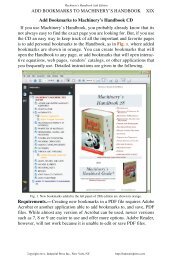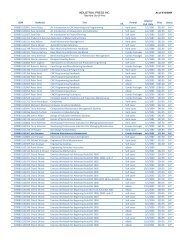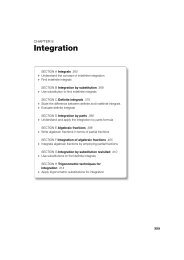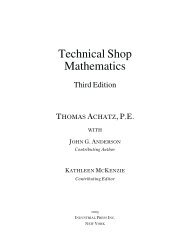computer numerical control programming basics - Industrial Press
computer numerical control programming basics - Industrial Press
computer numerical control programming basics - Industrial Press
You also want an ePaper? Increase the reach of your titles
YUMPU automatically turns print PDFs into web optimized ePapers that Google loves.
length is recorded on the tool list. Once the gage height has been<br />
set, it is not generally necessary to add the .100 in. to any future<br />
depth dimensions since most MCUs do this automatically.<br />
Fig. 22 Using a .100 in. gage block to set the gage height or R0 on the work surface. (Kelmar<br />
Associates)<br />
Cutter Diameter Compensation<br />
Cutter diameter compensation (CDC) changes a milling cutter’s<br />
programmed centerline path to compensate for small differences<br />
in cutter diameter. On most MCUs, it is effective for most cuts<br />
made using either linear or circular interpolation in the X-Y axis,<br />
but does not affect the programmed Z-axis moves. Usually compensation<br />
is in increments of .0001 in. up to +1.0000 in., and<br />
usually most <strong>control</strong>s have as many CDCs available as there are<br />
tool pockets in the tool storage matrix.<br />
The advantage of the CDC feature is that it:<br />
1. allows the use of cutters that have been sharpened to a<br />
smaller diameter.<br />
2. permits the use of a larger or smaller tool already in the<br />
machine’s storage matrix.<br />
3. allows backing the tool away when roughing cuts are required<br />
due to excessive material present.<br />
28








